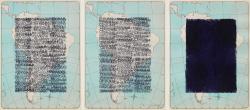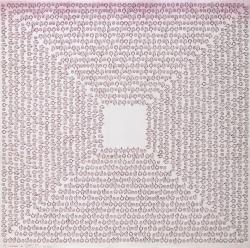From early on in Cildo Meireles’s career, the notion of circuit acquired an importance that lent materiality and meaning to various of his works. In texts written in the first half of the 1970s, the artist already identified the existence of large systems of circulation in which it would be possible to insert, individually and without any curtailment, information contrary to the very interests that provided the bases for those systems.
Since nearly the outset of his career, Cildo Meireles has aimed to critically discuss the idea of the space in which human life takes place—in both its physical and commonplace dimension as well as in a political and temporally enlarged perspective—avoiding approaches that are reductive or limited to making the topography of territories.1 1 “Many of my artworks involve a notion of territory which, at this exact moment, is in a state of indefinition, of suspension. Personally, I always considered the notion of country—as an extension of the body or place of the localized happiness—as a code of classification as vague and imprecise as any other. Once I conceived the project of a country so narrow that it could only be operated from a foreign land. It would be a minimal terrain, only a border, where only one person would fit, perhaps not even that.” Cildo Meireles in: Cildo Meireles, geografia do Brasil. Rio de Janeiro, Artviva Produção Cultural, 2001, p. 20. To this end, he has used a method of investigating the world which, rather than being focused only on the field of retinal perception, is based on the “synthesis between sensorial and mental relations,” in such a way that the feelings and the reason stimulate each other and operate in unison to produce knowledge about complex spaces.2 2 Gullar, Ferreira, “Teoria do Não-Objeto.” Jornal do Brasil, November 21/December 20, 1960. The centrality of the synesthetic relations in the work of Cildo Meireles is analyzed in: Cabañas, Kaira M., “Cildo Meireles: Awareness Within Anaesthesia”, Parachute, 110, 2003, pp. 24–41. It was in the context of this investigation that, from early on in his career, the notion of circuit acquired an importance that lent materiality and meaning to various of his works. In texts written in the first half of the 1970s, the artist already identified the existence of large systems of circulation in which it would be possible to insert, individually and without any curtailment, information contrary to the very interests that provided the bases for those systems.3 3 See the texts gathered under the generic title “Inserções em circuitos ideológicos 1970–75”, in: Cildo Meireles. São Paulo, Cosac Naify, 2000, pp. 110–116.
One of the first material demonstrations of what would arise was presented at the exhibition Information (Museum of Modern Art, New York, 1970), at which he showed Inserções em circuitos ideológicos 1 – Projeto Coca-Cola (Insertions Into Ideological Circuits 1 – Coca-Cola Project) and Inserções em circuitos ideológicos 2 – Projeto cédula (Insertions Into Ideological Circuits 2 – Banknote Project).4 4 The artworks Inserções em circuitos ideológicos 1 – Projeto Coca-Cola and Inserções em circuitos ideológicos 2 – Projeto cédula were shown, simultaneously, in the exhibition Agnus Dei: Thereza Simões, Guilherme Magalhães Vaz e Cildo Meireles (Petite Galerie, Rio de Janeiro, 1970).

The Projeto Coca-Cola consisted in gathering empty soft-drink bottles (at that time, made of glass and returnable to the manufacturer for reuse) and printing messages on them which ran counter to the “anesthetizing” effect of that (or any other) merchandise, and finally returning them into commercial circulation. As an example and demonstration that this work of counter-information could be reproduced by anyone, at the exhibition Cildo Meireles showed bottles on which he had attached transparent stickers bearing the well-known slogan (YANKEES GO HOME!) aimed at repudiating the United States’ policy of meddling in the economies, politics and cultures of other countries, along with instructions about how members of the public could proceed to insert their own “critical opinions” in the reified space they lived in, symbolized by Coca-Cola. Over the years, and each time he remade the work for exhibitions, he added other messages to this “ideological circuit,” reflecting on the conventions that delimit the space socially allocated to art (WHICH IS THE PLACE OF THE WORK OF ART?), or, on the other extreme, proposing other uses for the bottles he used in his work (affixing stickers with instructions on how to make “Molotov cocktails” with the Coca-Cola recipients).
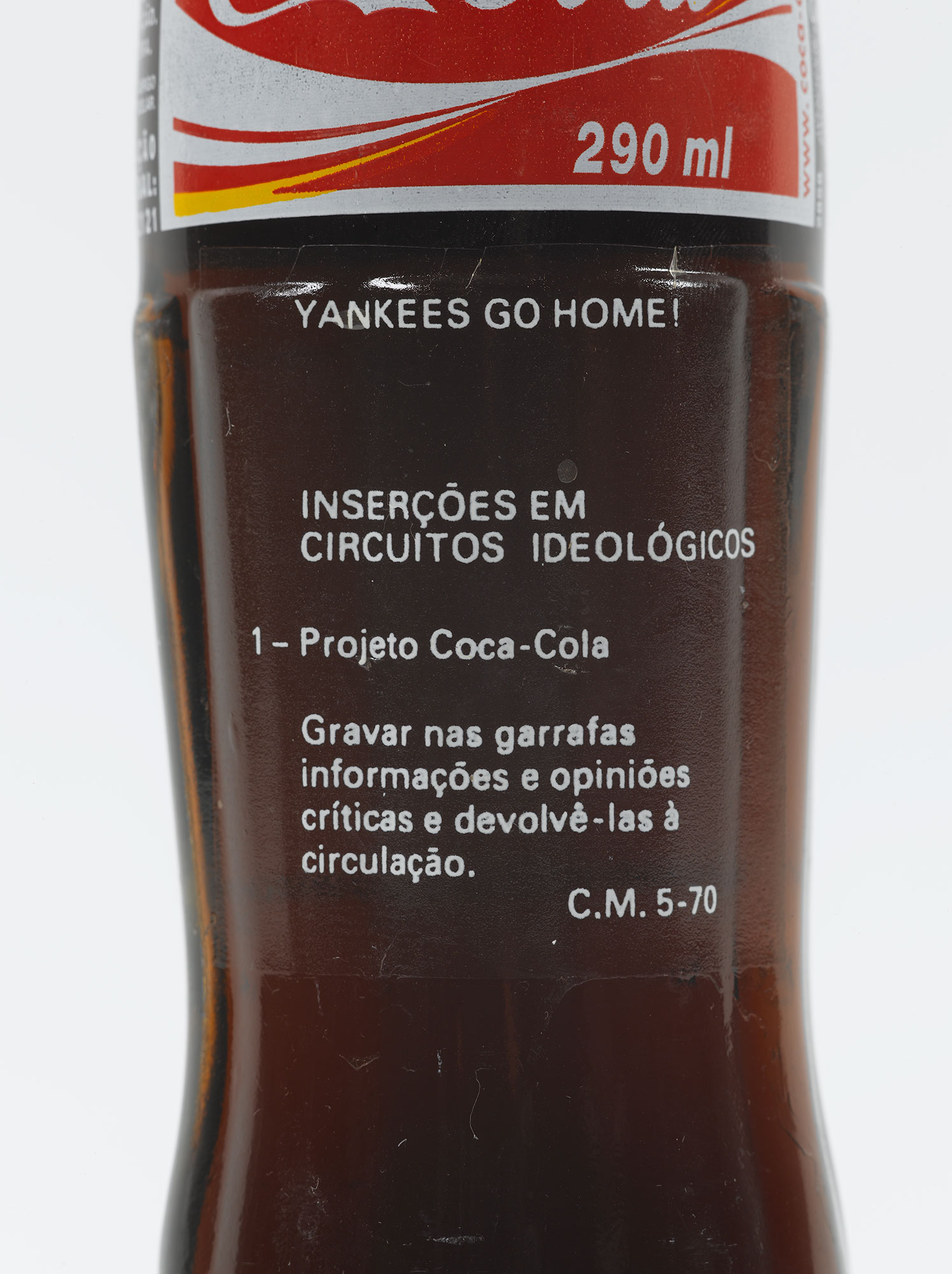
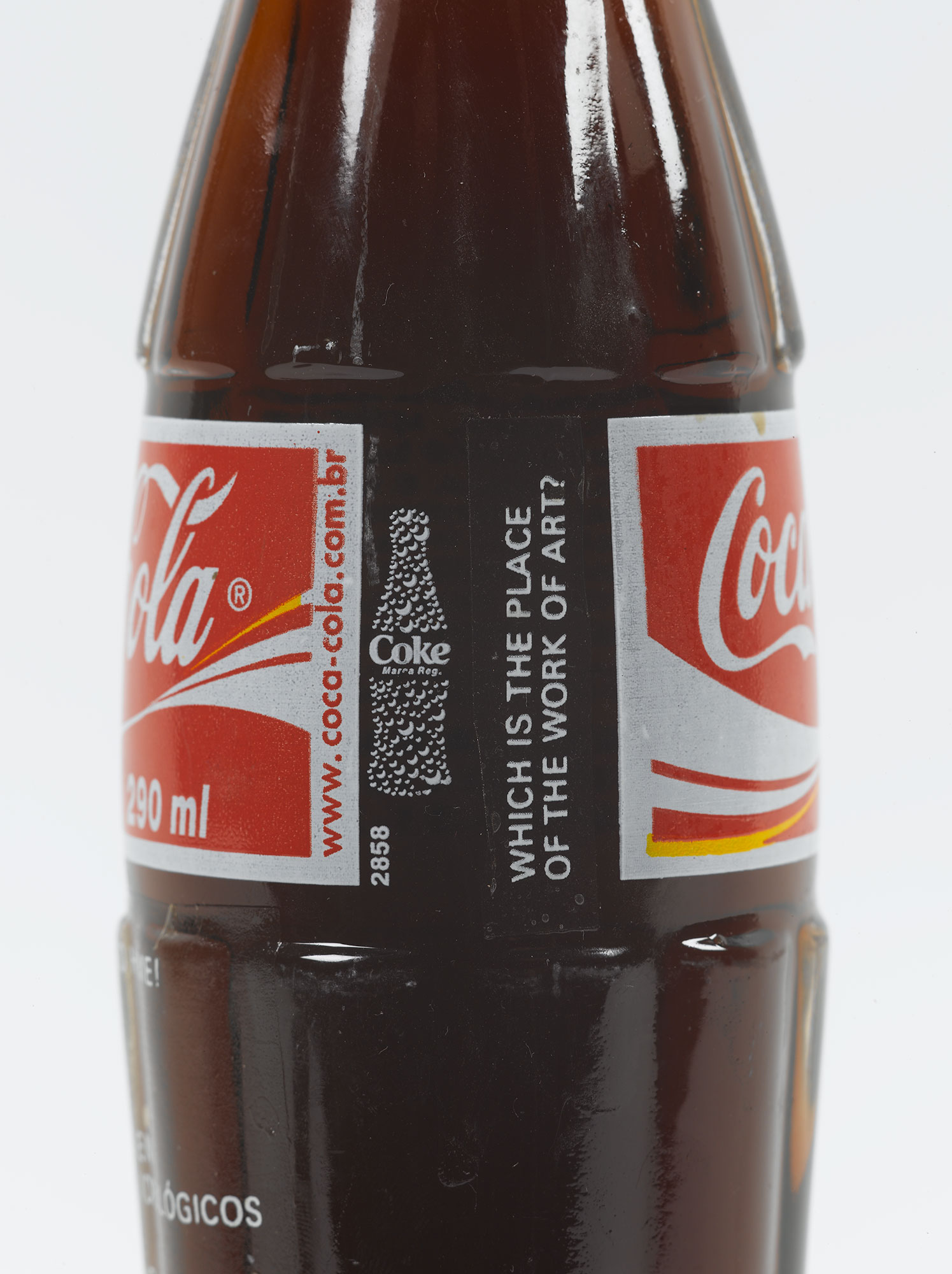
For its part, the Projeto cédula consisted of actions in which he gathered bills of circulating paper currency and silkscreened (or, as he later began doing, stamped) instructions and messages on them similar to those printed on the bottles, then inserting them back into circulation, as symbolic “parasites” in the circuit of monetary exchanges—a much more extensive and high-velocity circuit than that of the exchanges of Coca-Cola bottles. The most well-known messages that he spread in this way over the years included critiques of the Brazilian dictatorship then in power (1964–1985): QUEM MATOU HERZOG? (Who killed Herzog?), inquired the phrase printed in 1975 on official banknotes then in use, in reference to the questions surrounding the death of journalist Vladimir Herzog while he was under arrest by the agencies of political repression.
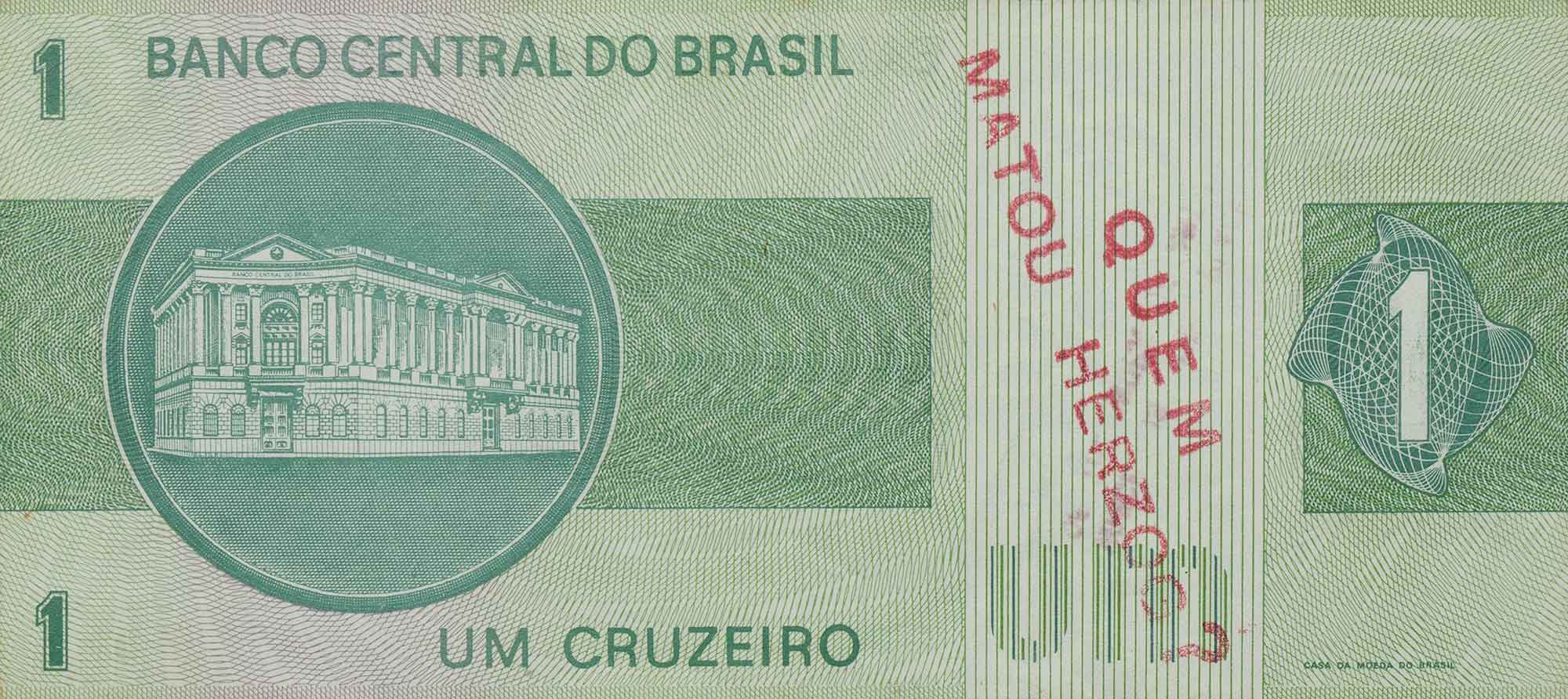
For the artist, these works were the inverse of the operation by which Marcel Duchamp had created the ready-made nearly six decades before: instead of removing an object from the commercial field and placing it in the consecrated field of art, Cildo Meireles proposed the insertion of noisy information in the homogenous field in which merchandise circulates and is exchanged. He moreover questioned the notion of the authorship of the artwork, since he encouraged others to make their insertions of their own, by way of the procedural instructions he furnished.5 5 To these artworks that can be made by any person based on the written instructions he furnishes, Cildo Meireles attributes the generic designation fonômenos, in a combined allusion to the words fonema [phoneme] and fenômeno [phenomenon]. See: Cildo Meireles in: Obrist, Hans Ulrich, Interviews, Volume I. Milan, Charta, 2003, p. 581. In fact, it was only based on individual, anonymous and diffuse expression, in face of the vast mechanisms of social control then in place, that the work gained its meaning and effectiveness, which makes Inserções em circuitos ideológicos less a support of propaganda and more the proposition of a distinct attitude in relation to the public space.6 6 Cildo Meireles. Valencia, IVAM Centre del Carme, 1995, p. 106. From that point onward, the (effective or potential) participation of the public was to play an essential role in the development of the artist’s work.
The limits of the transformative power of Inserções em circuitos ideológicos were tested by critic Frederico Morais—one of Cildo Meireles’s closest interlocutors—in an exhibition he organized at Petite Galerie, in Rio de Janeiro, in July 1970. After inviting three artists—Thereza Simões, Guilherme Magalhães Vaz, and Cildo Meireles—to select and present their works in the show he called Agnus Dei, Frederico Morais made critical commentaries on these artworks not through words but through artistic interventions of his authorship. He called this procedure A Nova Crítica (The New Criticism).
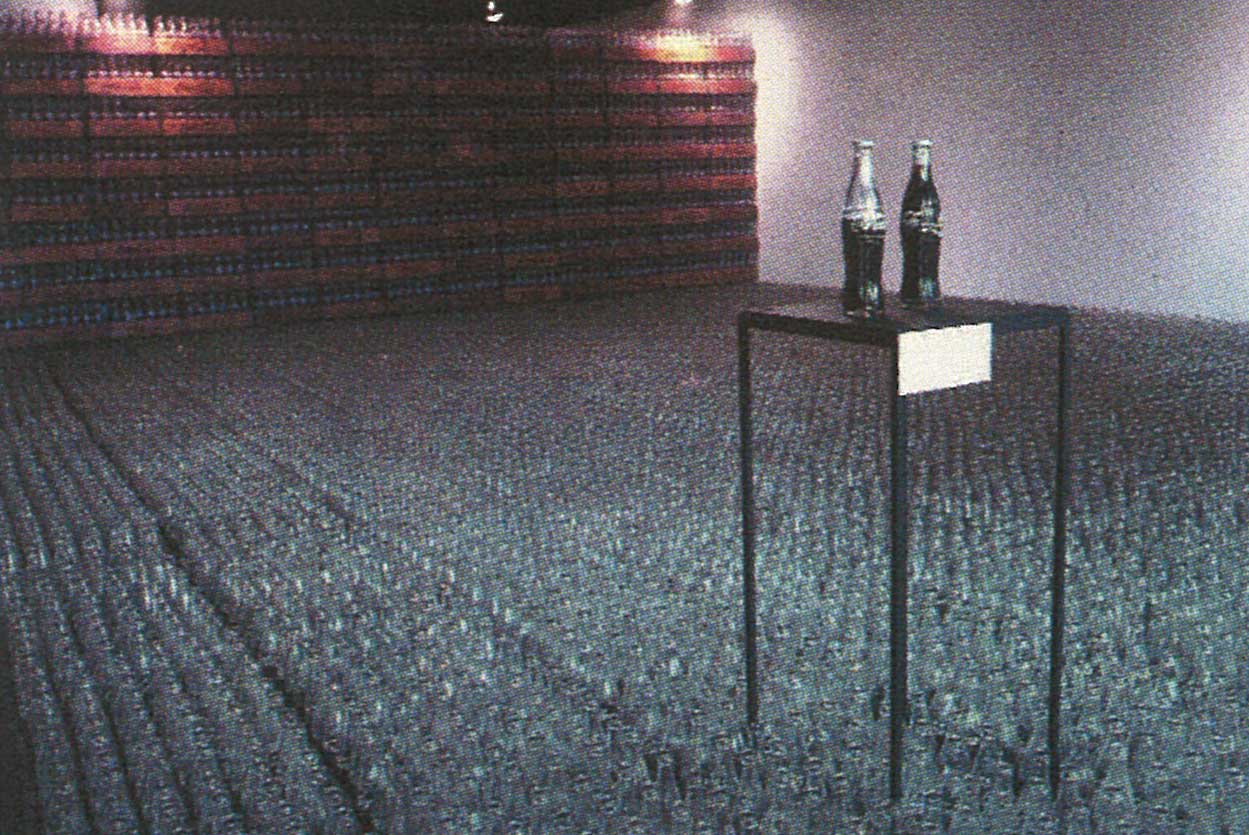
In response to the two bottles with silkscreened critical messages of the series Inserções em circuitos ideológicos 1 – Projeto Coca-Cola that Cildo Meireles presented at Agnus Dei, Frederico Morais installed, on the floor of the same gallery, 15 thousand bottles of the same soft drink, without any sort of insertion made on them.7 7 About this episode, see Rebouças, Júlia. Eis a arte. A atuação do crítico, curador e artista Frederico Morais (PhD Thesis). Belo Horizonte, Universidade Federal de Minas Gerais, 2017, pp. 231–240. Despite his great enthusiasm for the artist’s work, the critic wanted to demonstrate, with this gesture, the disproportion of forces that exist between the ideological circuits and the gesture of critical insertion carried out by the artist. Its power, like that of all art, springs from its capacity to operate more in the symbolic field than in the field of merchandise.
Moacir dos Anjos, 2017 Moacir dos Anjos is Curator and Senior Researcher at Fundação Joaquim Nabuco (Fundaj), Recife, Brazil.
(Translated by John Norman)

